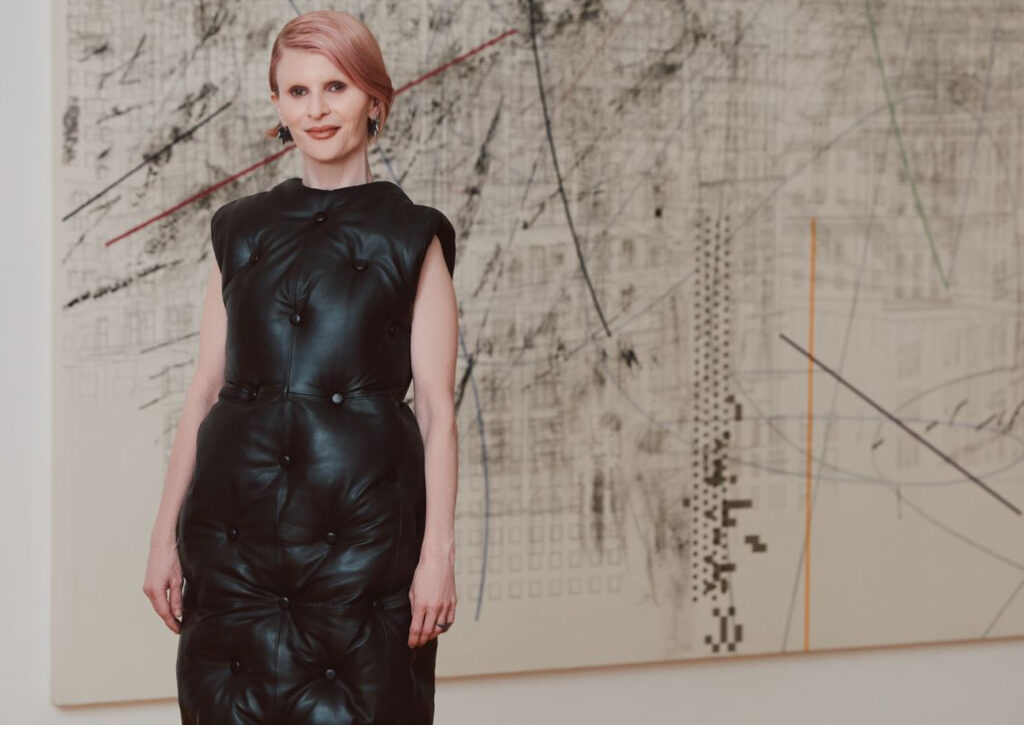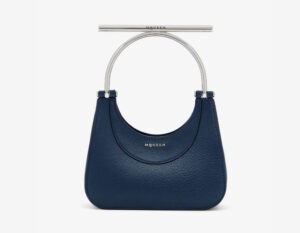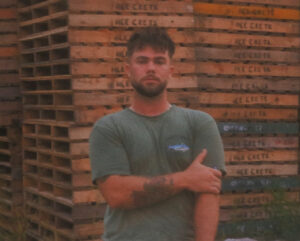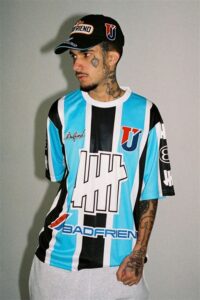The Lauren Amos Fashion Project and the High Museum’s Expanding Legacy in Fashion
In an era when fashion is increasingly recognized not merely as clothing but as cultural architecture—where garments become expressions of identity, power, resistance, and futurism—the institutions that elevate fashion to the level of art play an essential role. The High Museum of Art in Atlanta has long been at the forefront of that evolution, deftly weaving contemporary sensibilities with historical context through its bold exhibitions. Now, with an extraordinary multimillion-dollar commitment from Atlanta-based fashion entrepreneur and philanthropist Lauren Amos, the museum will permanently inscribe fashion into its institutional DNA.
This landmark contribution launches the Lauren Amos Fashion Project, a multifaceted initiative that promises to deepen the High’s exploration of global design, offer permanent curatorial infrastructure for fashion, and establish Atlanta as a burgeoning epicenter for sartorial scholarship and exhibition. The endowment marks a significant moment in the museum’s near-century-long history, formalizing its commitment to fashion as an intellectual and aesthetic pursuit, worthy of dedicated resources and visionary leadership.
A Gift That Rewrites Institutional Priorities
Lauren Amos is no stranger to art or fashion. Known as the force behind Wish ATL, a progressive fashion boutique in Atlanta’s Little Five Points, she has long championed the avant-garde. Her influence extends beyond commerce into education, community support, and deep patronage of the arts. Amos’ multimillion-dollar gift, offered over a five-year span, is both personal and strategic: it provides operational and visionary support to the museum, underwriting exhibitions, programming, and—most crucially—a new curatorial position exclusively devoted to fashion.
This is more than a donation. It’s a recalibration. The Lauren Amos Fashion Project ensures that fashion will not exist on the periphery of the High’s curatorial agenda but will sit squarely within its intellectual core. For decades, fashion exhibitions at major institutions—especially outside traditional fashion capitals—have often been seen as novelties or footnotes, a temporary diversion from “serious” art. Amos’ gift decisively ends that relegation at the High, giving fashion a permanent seat at the table.
Viktor&Rolf: The Inaugural Statement
The first public manifestation of the Lauren Amos Fashion Project will arrive in autumn 2025 with “Viktor&Rolf: Fashion Statements,” the first major U.S. retrospective dedicated to the audacious Dutch couture duo. Opening on October 10, 2025, and running through February 8, 2026, the exhibition will serve as both a celebration of Viktor&Rolf’s baroque, often surrealist approach to fashion, and a declaration of intent from the High itself. This is not fashion as commodity. This is fashion as conceptual art.
For nearly three decades, Viktor Horsting and Rolf Snoeren have blurred the line between fashion and philosophy, creating collections that meditate on identity, form, femininity, and spectacle. They have produced gowns that speak, physically and metaphorically—literal messages embedded in tulle, garments constructed from pillows or deconstructed silhouettes, critiques of the fashion industry disguised as haute couture. The pair’s theatrical defiance of fashion’s traditional format makes them an ideal opening act for this next chapter in the High’s journey.
By selecting Viktor&Rolf as the centerpiece of its inaugural Lauren Amos–backed programming, the High underscores a curatorial stance that prizes innovation, irony, and critical engagement over mere opulence. It reaffirms the museum’s commitment to showcasing voices that challenge fashion norms and provoke cultural conversation.
Building on a Legacy: Fashion at the High
The High is no stranger to fashion-forward curating. In recent years, the museum has built an impressive reputation for its immersive and daring fashion exhibitions. Notably, “Iris van Herpen: Transforming Fashion” (2015–2016) introduced audiences to the Dutch designer’s sci-fi-inflected, 3D-printed couture, fusing biology, technology, and wearable sculpture. The show cemented the High’s ability to present fashion as conceptual and cross-disciplinary, not merely trend-focused or seasonal.
Following that, “The Rise of Sneaker Culture” (2016) offered a cultural lens on footwear, exploring how sneakers evolved from athletic gear to streetwear symbols, with relevance spanning race, identity, and economics. It was a pivotal moment for Atlanta, a city whose contribution to sneaker and hip-hop culture cannot be overstated. Then, in 2019–2020, “Virgil Abloh: ‘Figures of Speech’” brought the late polymath’s vision to life, contextualizing his design work within art, branding, and Black cultural critique.
These exhibitions were not anomalies but indicators of a brewing sensibility—one that saw fashion as a vital cultural force. Lauren Amos’ contribution makes that sensibility a permanent structure. It converts vision into legacy.
The Role of a Fashion Curator: Shaping Narrative Futures
Central to the Lauren Amos Fashion Project is the hiring of a full-time curator for fashion—a position the High Museum has never previously offered in its nearly 100-year history. This individual will be responsible not only for exhibition development but also for scholarly research, acquisitions, and public programming. They will act as a narrative architect, connecting global fashion movements to local communities and museumgoers.
The establishment of a curatorial seat signals something profound: that fashion is not ornamental but epistemological. It is a system of ideas, histories, and innovations that merit academic interrogation and creative celebration. The new curator will not merely stage shows—they will construct contexts, draw connections, and help visitors understand how a gown or sneaker or handbag can carry the weight of a generation’s values and tensions.
This role also opens the door to intersectional programming—collaborations with performance artists, musicians, philosophers, and scientists. Fashion does not live in a vacuum. It feeds and is fed by culture at large. And in Atlanta, a city with deep roots in Black creativity, Southern modernism, and experimental streetwear, that dialogue has endless potential.
Atlanta as a Fashion Capital
For years, Atlanta has been a cultural capital in everything but name. It’s the engine behind modern hip-hop aesthetics, a laboratory for queer expression, a stage for new Black southern identity. Yet, despite its influence, the city has long lacked a consistent institutional anchor for fashion discourse.
The Lauren Amos Fashion Project changes that. It formally declares Atlanta not just a place where fashion is worn and created, but a place where it is studied, archived, and celebrated. And unlike legacy fashion hubs like New York or Paris, Atlanta offers something refreshingly unencumbered: space for new canons to emerge, for alternative histories to be told, for future-forward approaches to flourish.
Amos’ gift also challenges other philanthropists, educators, and institutions to rethink how fashion is positioned in cultural hierarchies. The decision to fund not just shows but scholarship and staffing reveals a long-term vision: one where museums lead conversations rather than simply echoing the trends of the industry.
Toward 2028–2029: What Comes Next
While Viktor&Rolf: Fashion Statements will serve as the program’s glamorous debut, the High has already hinted at another major fashion exhibition on the horizon—slated for 2028–2029. Though details remain under wraps, the prospect suggests an evolving, long-term plan rather than a singular philanthropic gesture.
With the new curator in place and a growing foundation of support, this future exhibition offers an opportunity to further explore fashion through the lens of socio-political movements, sustainability, technology, or diasporic identity. It may showcase an entirely different aesthetic universe—perhaps African fashion futurisms, post-pandemic design movements, or Southern streetwear collectives. The beauty lies in the openness of the frame. With resources secured, the museum is free to take risks, invite experimental voices, and develop work that resonates both globally and locally.
Philanthropy as Cultural Intervention
Lauren Amos’ donation is more than financial—it is ideological. It asserts that fashion is worthy of permanent presence within the canon of art history, not as decoration but as document. It reflects a growing movement of collectors, patrons, and cultural stewards who are shifting museum priorities from Eurocentric, static traditions to dynamic, intersectional storytelling.
In choosing to support not just spectacle but infrastructure—staffing, research, future exhibitions—Amos enacts a holistic form of philanthropy. It’s a model others should emulate, one that recognizes that sustainability in the arts is not just about what hangs on walls or walks a runway, but about who has the institutional power to define relevance and guide discourse.
Impression
The Lauren Amos Fashion Project is not just a new chapter for the High Museum—it’s a declaration of fashion’s place in cultural history, civic imagination, and intellectual life. It elevates Atlanta to the status of fashion capital, not by mimicking New York or Milan, but by leaning into its own eccentricities, energies, and histories.
With this transformative gift, Lauren Amos cements herself as more than a benefactor. She becomes a steward of future narratives, ensuring that fashion’s past, present, and potential will be explored, preserved, and celebrated for years to come. And in doing so, she doesn’t just rewrite the High Museum’s future—she expands the very boundaries of what a museum can be.
No comments yet.







